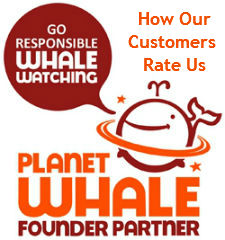Dolphin Conservation |
|
Dolphins and other small cetaceans face a greater number of threats to their species survival today that at any other time during their evolution and at a time when there are more acts designed to protect them than ever before. We select below a few of those issues that require serious attention and make dolphin conservation a pressing need the world over. BycatchDolphins and Yellowfin Tuna are frequently found swimming together. The reasons for this are not fully understood but we believe the tuna are taking advantage of the dolphins' ability to find prey as they frequently feed on the same species. Fishermen have long noticed this association and have sought to exploit this association by fishing close to groups of dolphins. This practice was commonplace in the Pacific from the 1950's onwards and resulted in the deaths of thousands of dolphins caught up in purse seine nets employed to catch the tuna. Although public pressure resulted in a reduction in dolphin deaths through purse seining it still continues. Today the greatest threat to dolphins and porpoises are bottom set gill nets and tangle nets. These "walls of death" account for the deaths of thousands of animals annually around the globe but none worse than in the Western approaches to the UK and the southern Celtic Sea where boats from several nations set miles of bottom set gill nets resulting in carnage at unprecedented levels. Recent years have seen the employment of acoustic devices known as pingers designed to prevent small cetaceans approaching these gill nets. There has been some success. In the UK and Ireland it is now mandatory to fit pingers to bottom set gill nets but insufficient testing of these devices has resulted in little enforcement of this legislation with a result that thousands of animals are still being killed in this unsustainable and wasteful fishery. Subsistence HuntingMany countries continue to allow hunting of dolphins for aboriginal, cultural or subsistence purposes. Dolphins and small whales are killed and used for food, oil or other traditional uses and their products cannot legally be traded. This has proven difficult to regulate and some trade in derivative products still occurs. Many of the species involved in subsistence hunting are considered endangered, certainly at the local level, if not in the wider world. Legislation to allow subsistence hunting and to meet cultural needs frequently results in a loophole, which may be exploited by the unscrupulous. Habitat DegradationIt is likely that the greatest contemporary threat to dolphins and other cetaceans will be habitat degradation through pollution and climate change. Being at the top of the food chain cetaceans concentrate pollutants such as PCB's, heavy metals and pesticides in their body tissues which has deleterious effects on their ability to reproduce and on their immune system integrity. Most of these pollutants do not readily degrade or if they do, take a very long time to do so rendering the damage inflicted long lasting. Many believe that climate change due to global warming will have far reaching and profound affects on cetacean populations in general but particularly dolphins and whales. The reduction in sea ice coverage in our polar regions may cause significant drops in the levels of algae which feed krill leading to a reduction in the numbers of these small shrimp like creatures. As krill is the basis of the food chain on which many species of cetaceans rely, along with birds and many fish species, reductions in the levels of krill may well cause catastrophic decline across a broad range of species.
Read more about:
Return to TopOur Dolphin & Whale Watching Tours
|
Click on images for larger view:
|
Whale WatchingWhale Watching in IrelandWhale Watching TripsWhale Watching HolidaysDolphin WatchingDolphin EncountersDolphin HolidaysOther Marine Wildlife Tours |
More About WhalesWhale ConservationWhale PicturesMore About DolphinsDolphin PicturesPorpoisesSealsAbout
|













